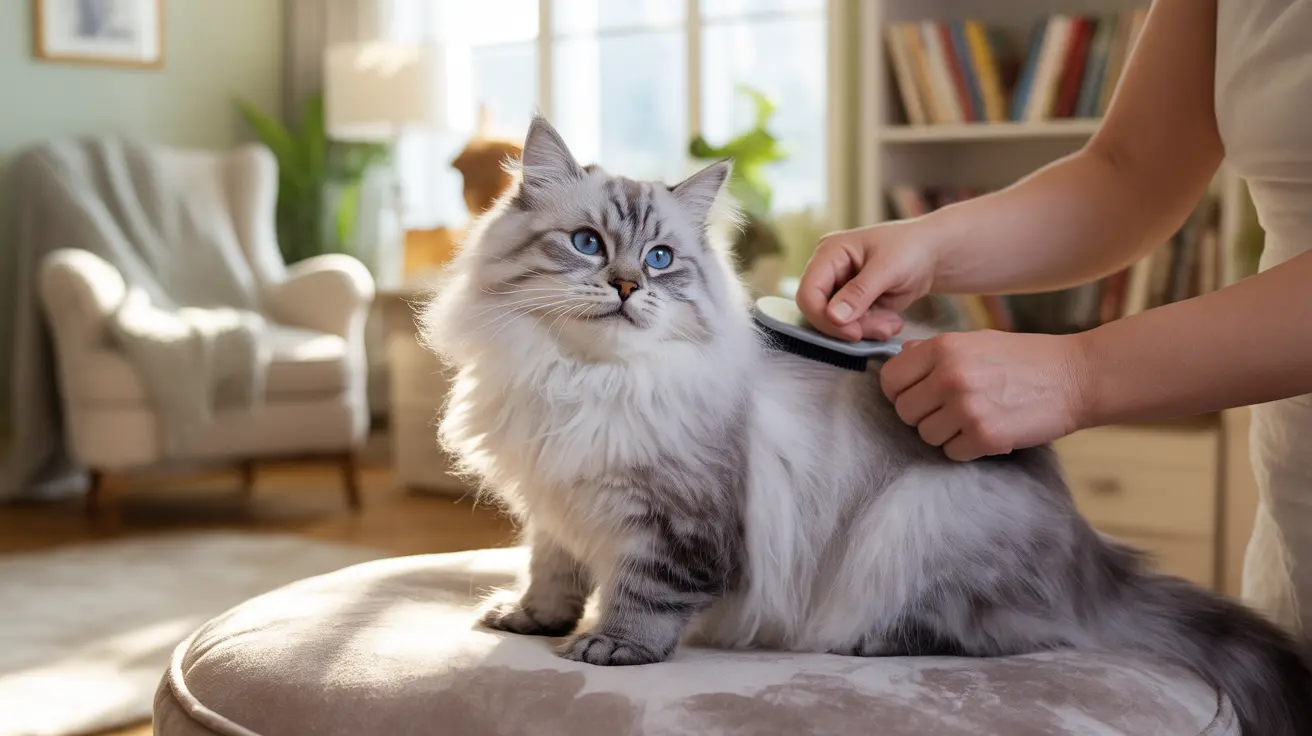Understanding Normal vs. Excessive Shedding
If you've ever wondered "why is my cat shedding so much," you're not alone. Shedding is a natural process that helps cats maintain healthy skin and fur. However, the amount of shedding can vary significantly based on several factors, and sometimes excessive shedding can signal underlying issues that need attention.
While all cats shed to some degree, understanding the difference between normal and excessive shedding is crucial for maintaining your cat's health. This comprehensive guide will help you identify normal shedding patterns, recognize potential problems, and learn effective management strategies.
Natural Shedding Cycles and Patterns
Cats typically experience one or two major shedding cycles each year, primarily during spring and fall. During spring, cats shed their thick winter coats to prepare for warmer weather. In fall, they lose their lighter summer fur to make way for a new winter coat.
Indoor cats might shed more consistently throughout the year due to artificial lighting and controlled temperatures, which can affect their natural shedding cycles. This consistent year-round shedding might seem excessive but is often normal for indoor pets.
Common Causes of Excessive Shedding
Environmental Factors
Temperature changes, stress, and environmental allergens can all trigger increased shedding. Even simple changes in your home, like new furniture or renovations, can cause temporary increases in shedding due to stress.
Health-Related Issues
Sometimes excessive shedding indicates underlying health problems such as:
- Hormonal imbalances
- Nutritional deficiencies
- Skin infections or parasites
- Allergies
- Autoimmune conditions
Managing Your Cat's Shedding
Regular Grooming
Establishing a consistent grooming routine is crucial for managing shedding. Daily brushing helps remove loose fur before it ends up on your furniture and can also:
- Distribute natural oils throughout your cat's coat
- Prevent matting and tangles
- Create bonding time with your pet
- Allow you to check for skin problems
Nutrition and Diet
A balanced diet rich in essential nutrients can significantly impact your cat's coat health. Look for foods containing:
- High-quality protein
- Omega-3 fatty acids
- Vitamins A and E
- Zinc and biotin
Environmental Management
Creating a stress-free environment can help reduce excessive shedding. Consider:
- Maintaining consistent daily routines
- Providing quiet spaces for retreat
- Using calming products if needed
- Keeping a stable home temperature
When to Consult a Veterinarian
While shedding is normal, certain signs warrant professional attention:
- Bald patches or irregular hair loss
- Skin irritation, redness, or scabs
- Excessive scratching or grooming
- Significant changes in shedding patterns
- Accompanying symptoms like lethargy or appetite changes
Frequently Asked Questions
Why is my cat shedding so much all of a sudden outside of normal seasonal changes?
Sudden increases in shedding can be caused by stress, dietary changes, hormonal fluctuations, or underlying health issues. If the change is dramatic or accompanied by other symptoms, consult your veterinarian.
How can I tell if my cat's excessive shedding is caused by stress or an underlying health problem?
Stress-related shedding often coincides with environmental changes or disruptions in routine. Health-related shedding typically involves additional symptoms like skin issues, behavioral changes, or changes in eating habits.
What are the best ways to reduce and manage my cat's heavy shedding at home?
Regular brushing, providing a high-quality diet, maintaining a consistent routine, and using appropriate grooming tools are the most effective ways to manage shedding at home.
Does the breed or age of my cat affect how much they shed?
Yes, long-haired breeds typically shed more than short-haired cats. Age can also impact shedding, with seniors sometimes shedding more due to decreased grooming ability or health changes.
Can allergies or parasites like fleas cause my cat to shed more than usual?
Yes, both allergies and parasites can cause increased shedding along with skin irritation. If you suspect either condition, seek veterinary care for proper diagnosis and treatment.
Conclusion
While cat shedding is a natural process, understanding its patterns and causes helps you better manage it and identify potential health issues early. Regular grooming, proper nutrition, and attention to your cat's overall health are key to maintaining a healthy coat and managing shedding effectively.






